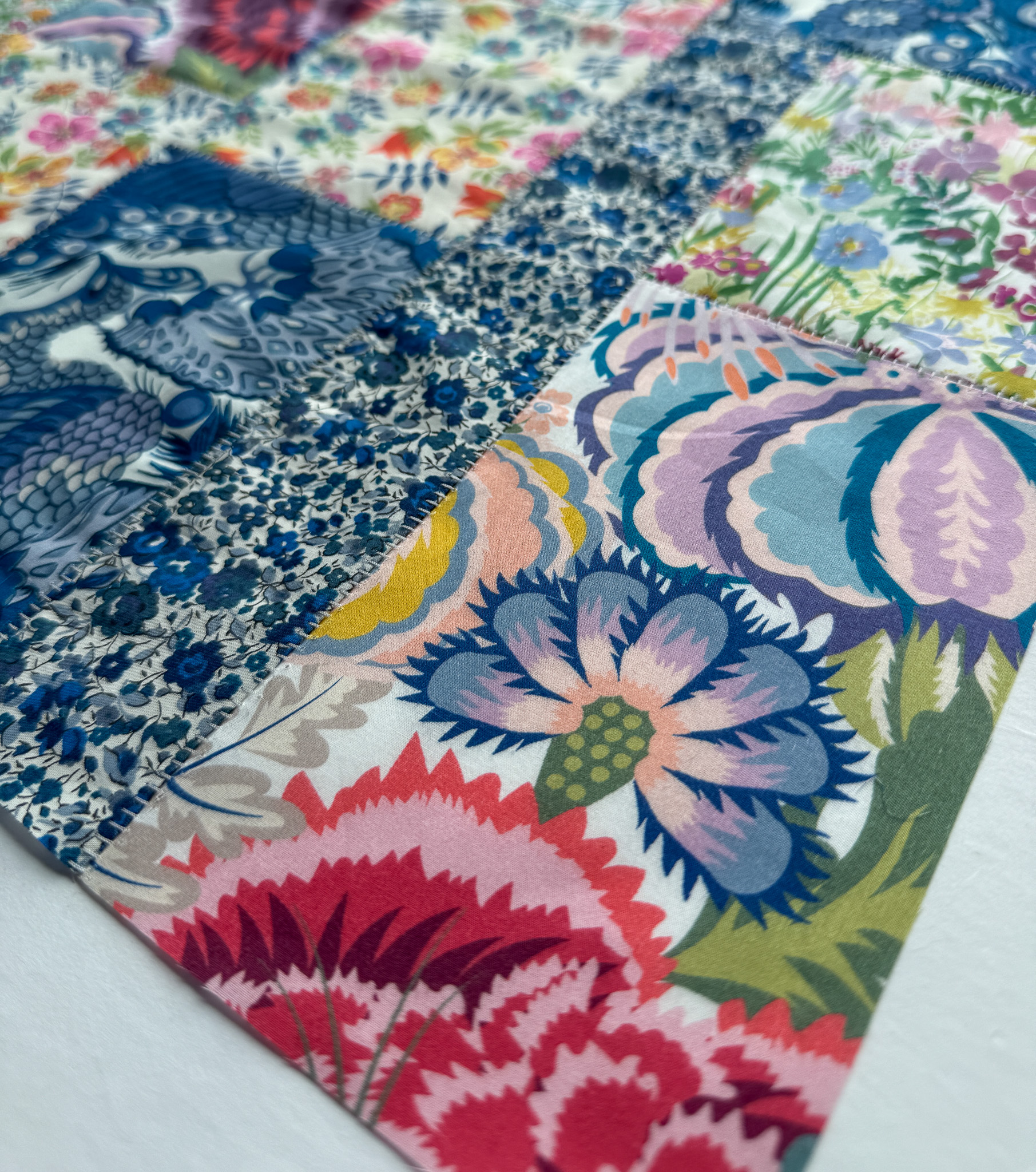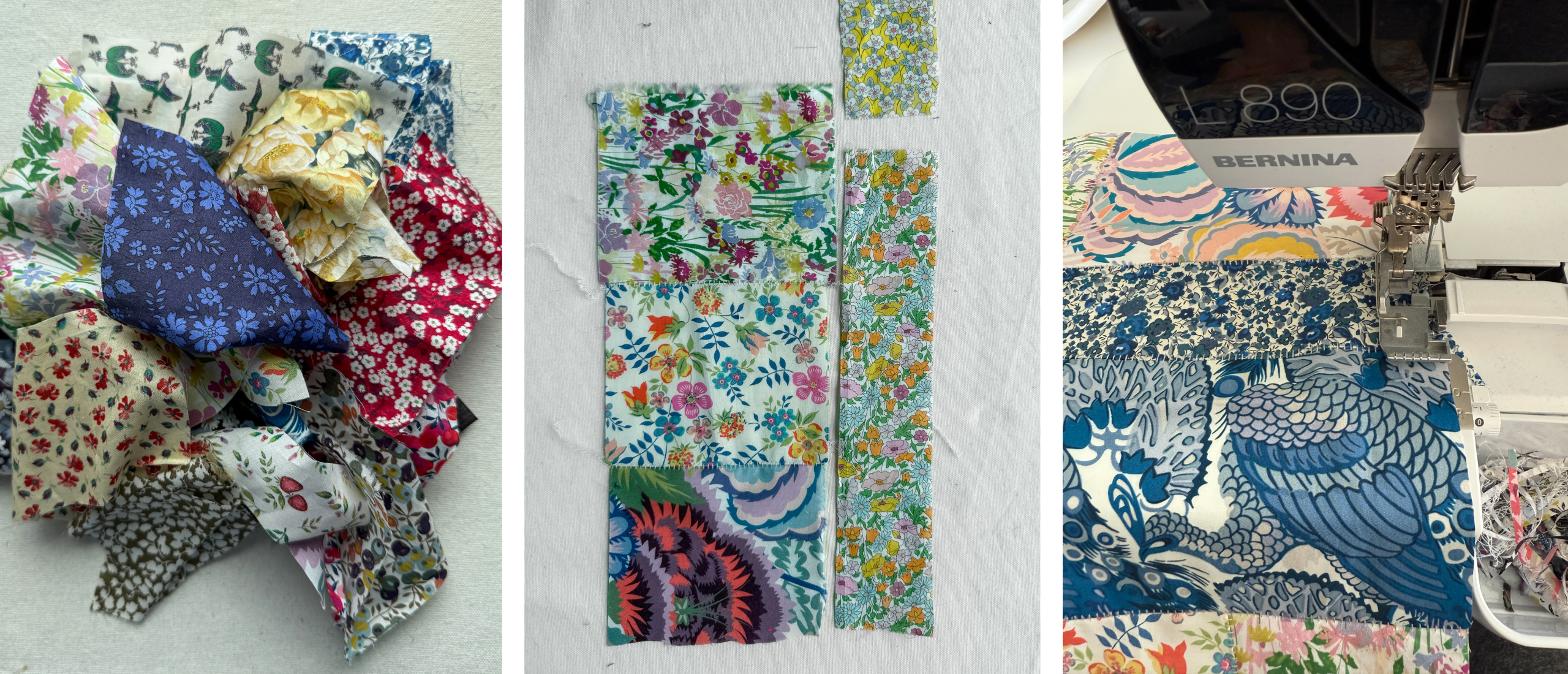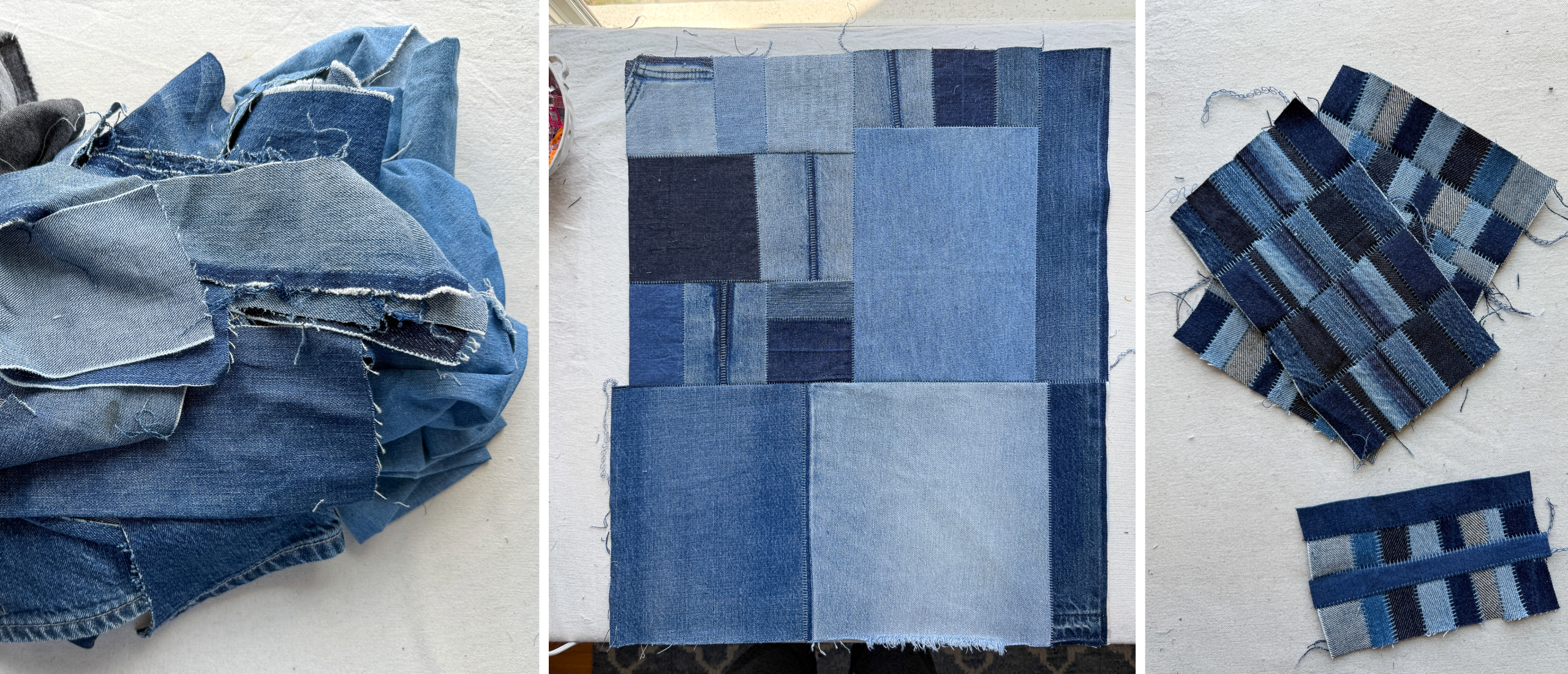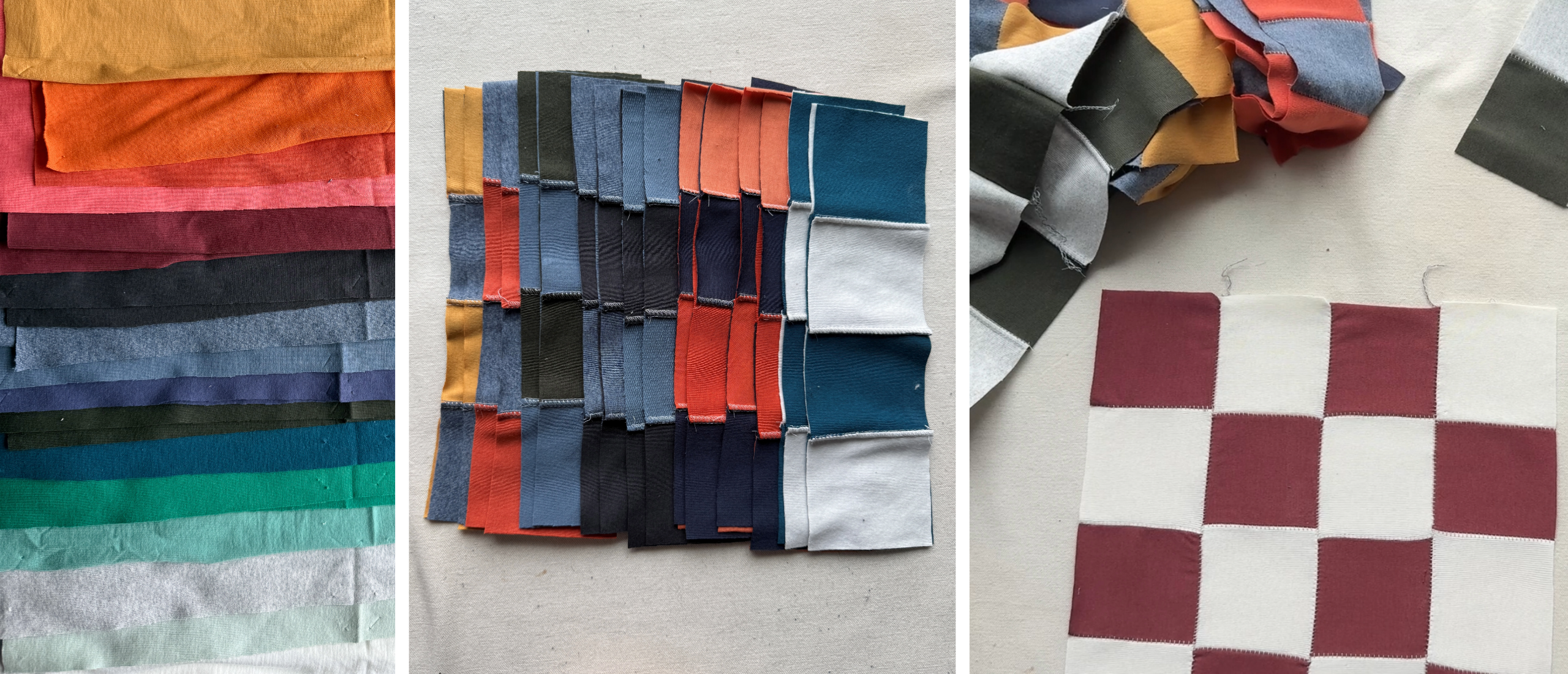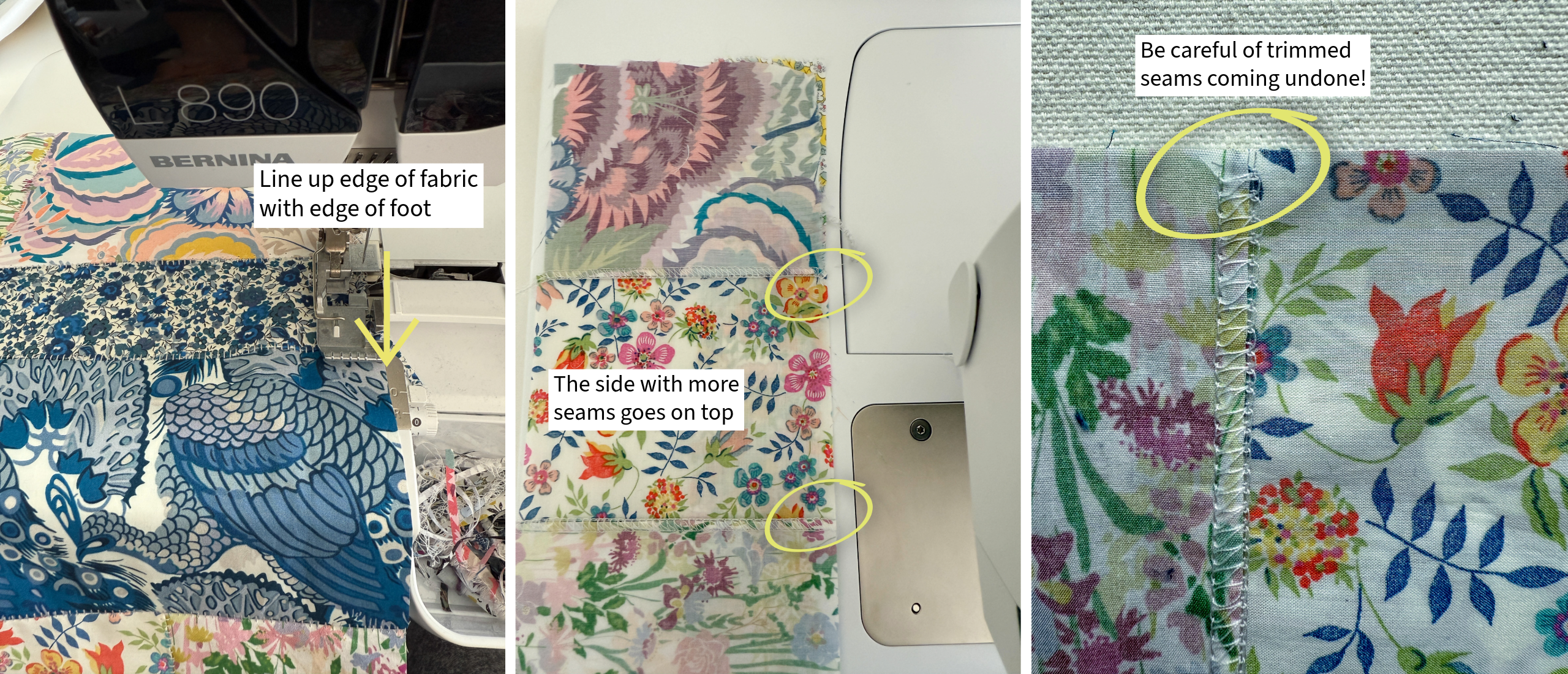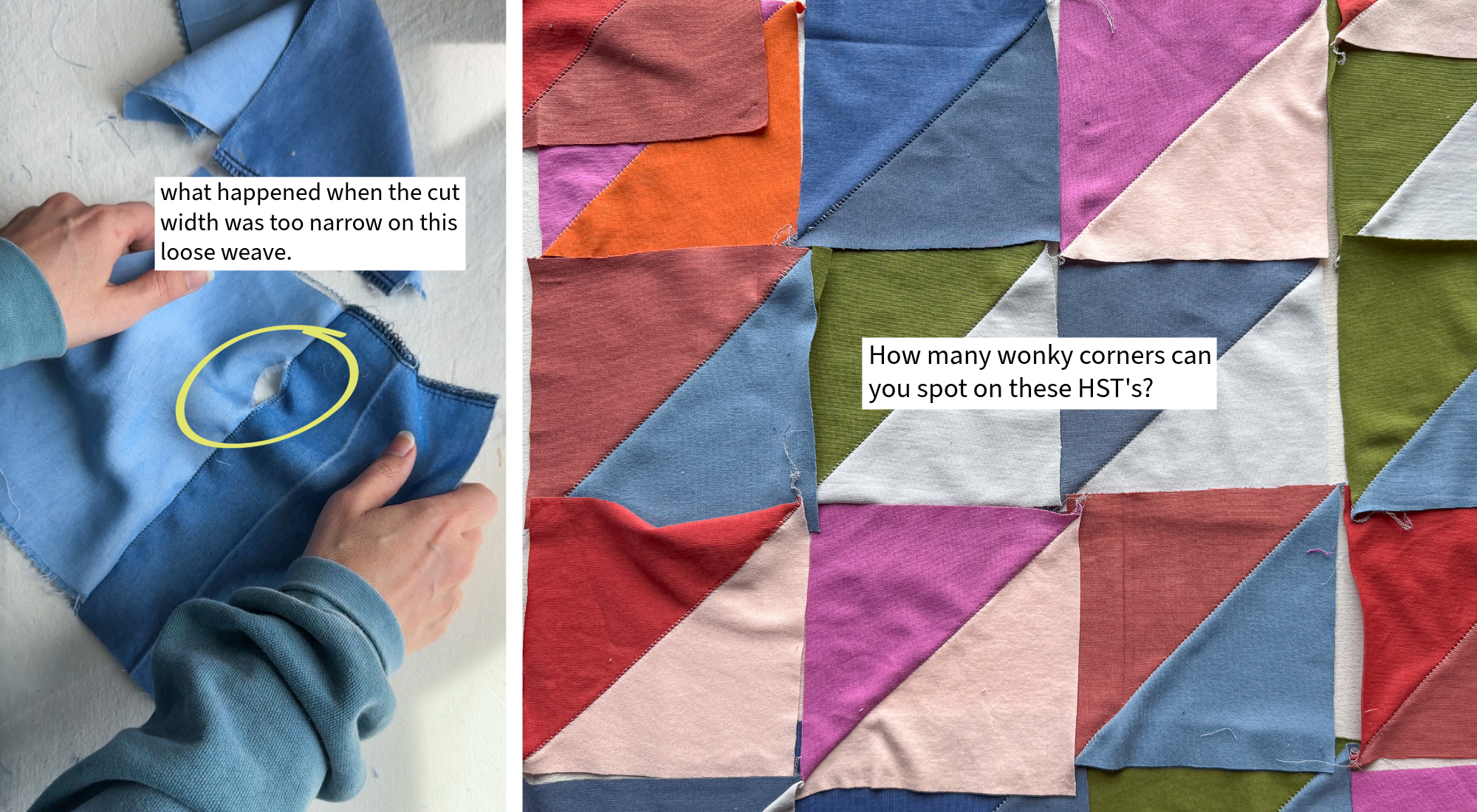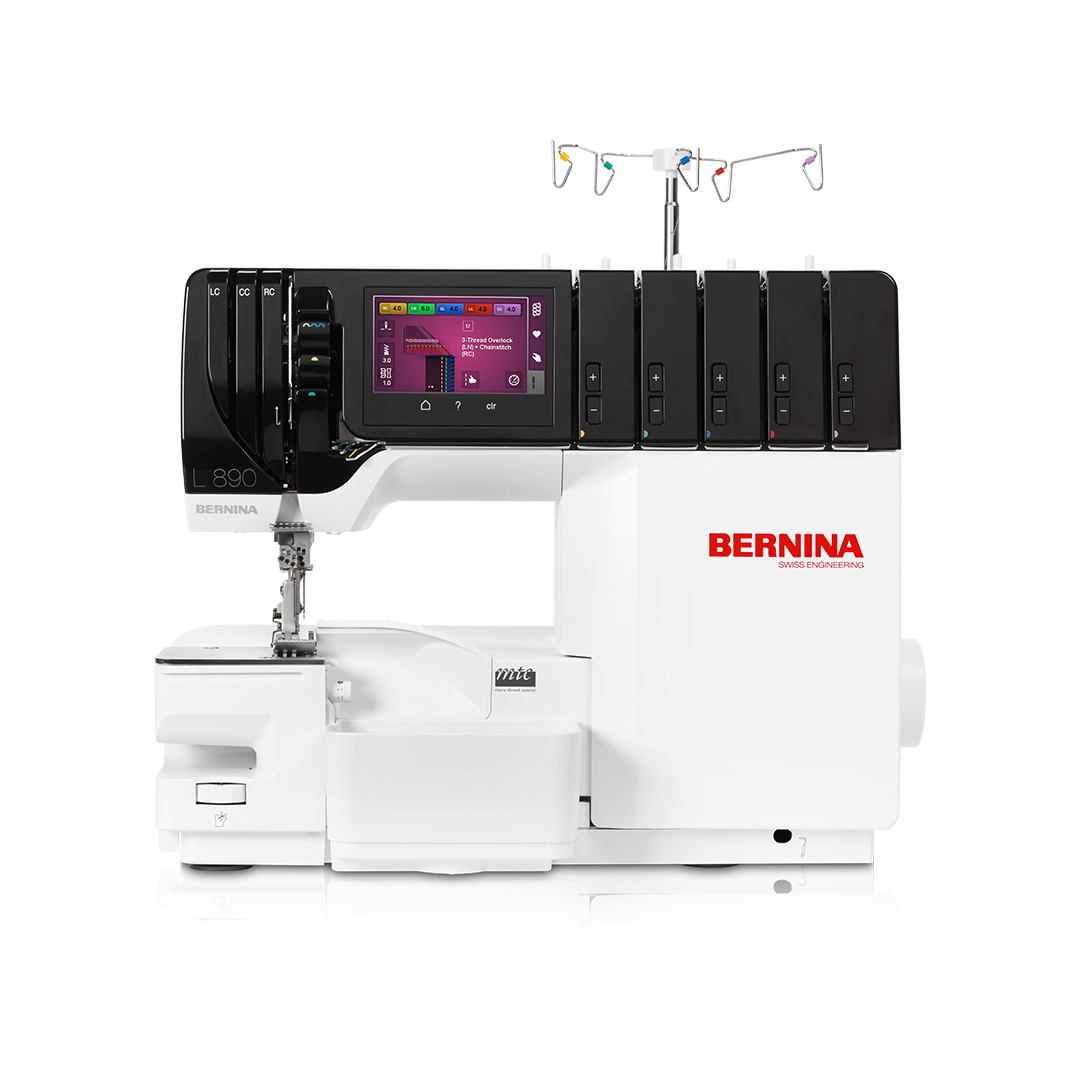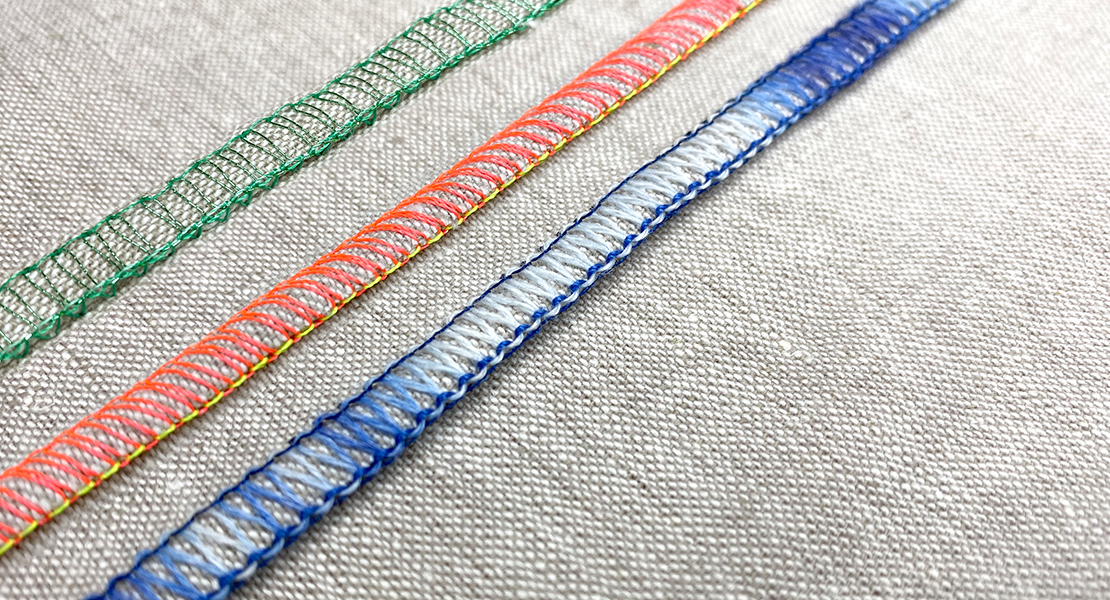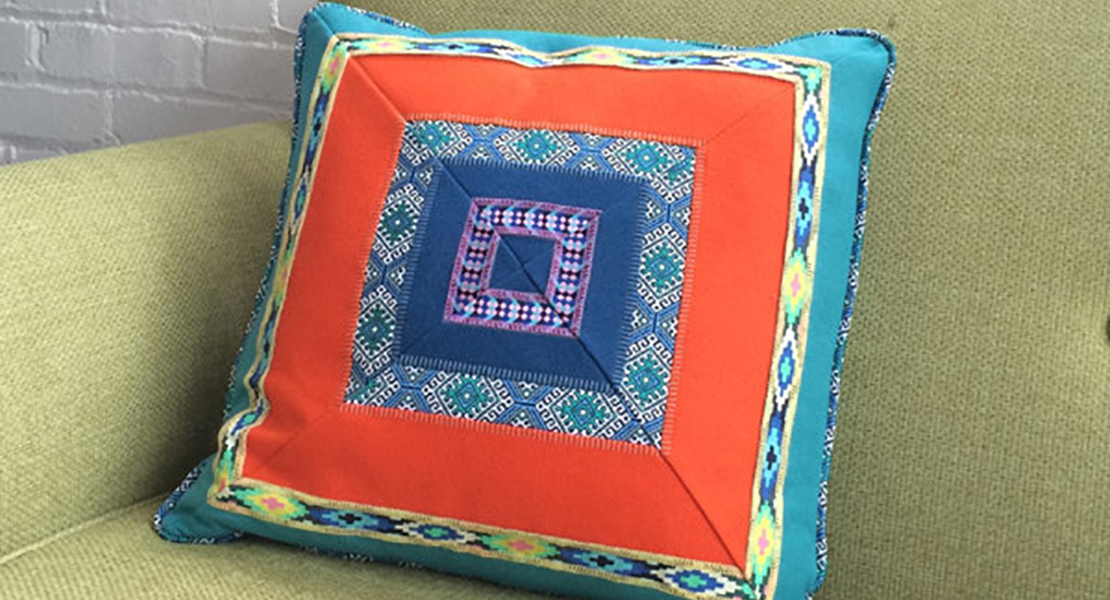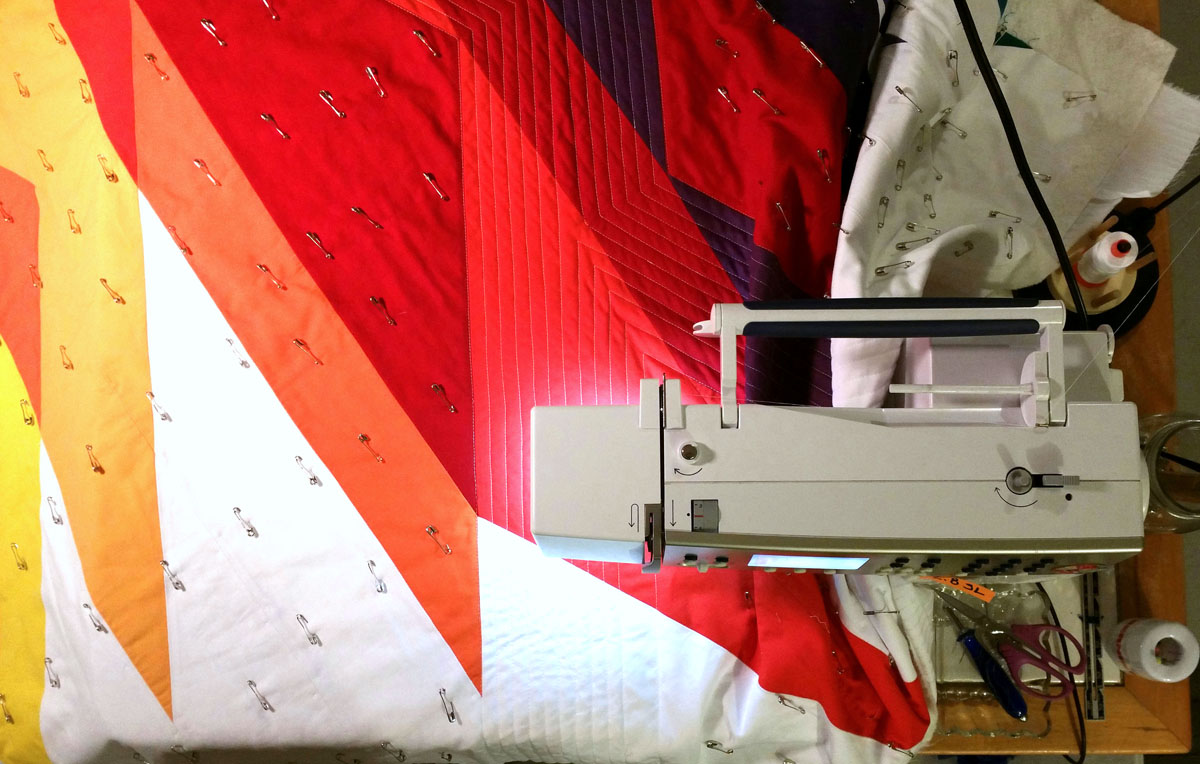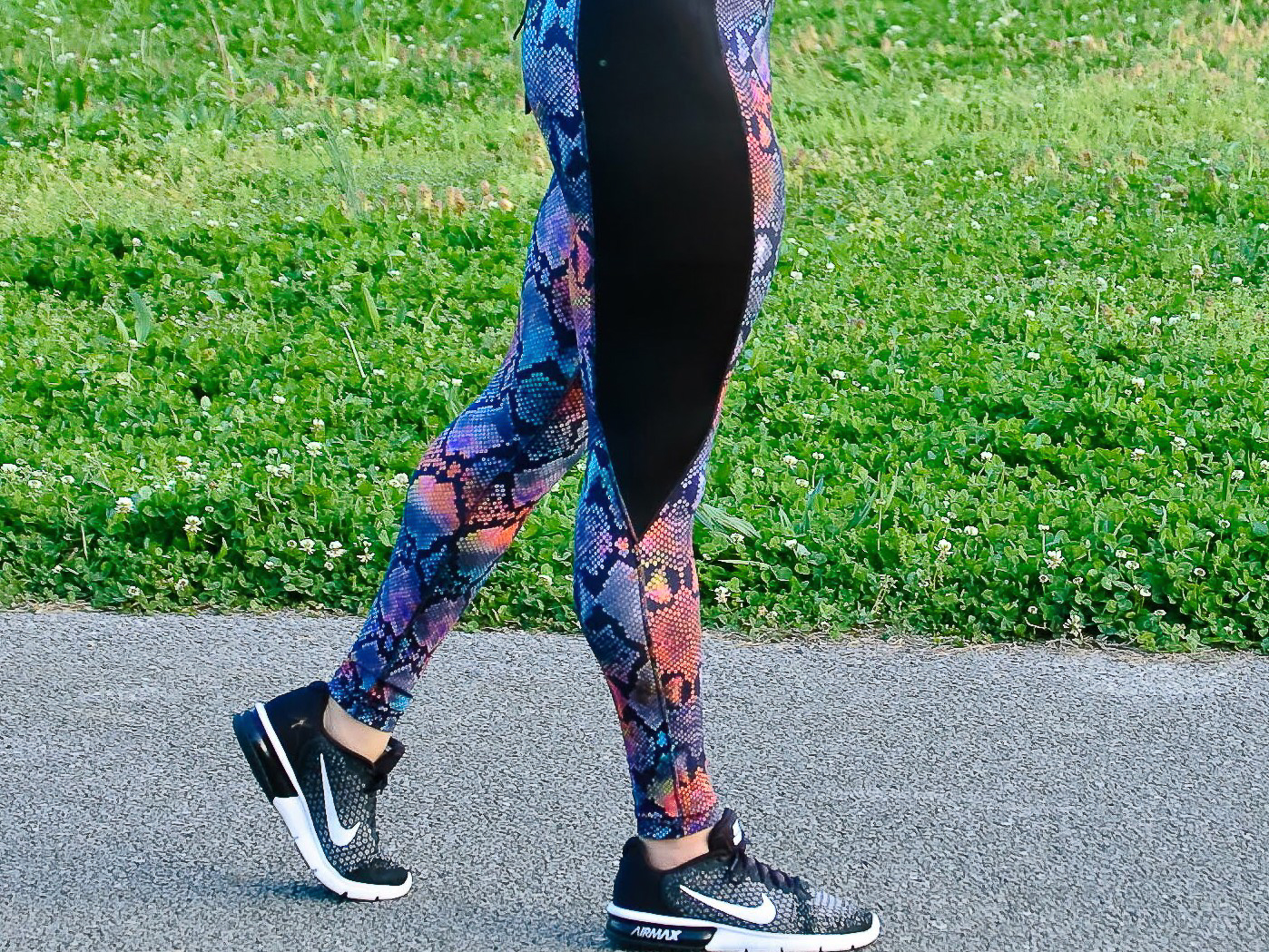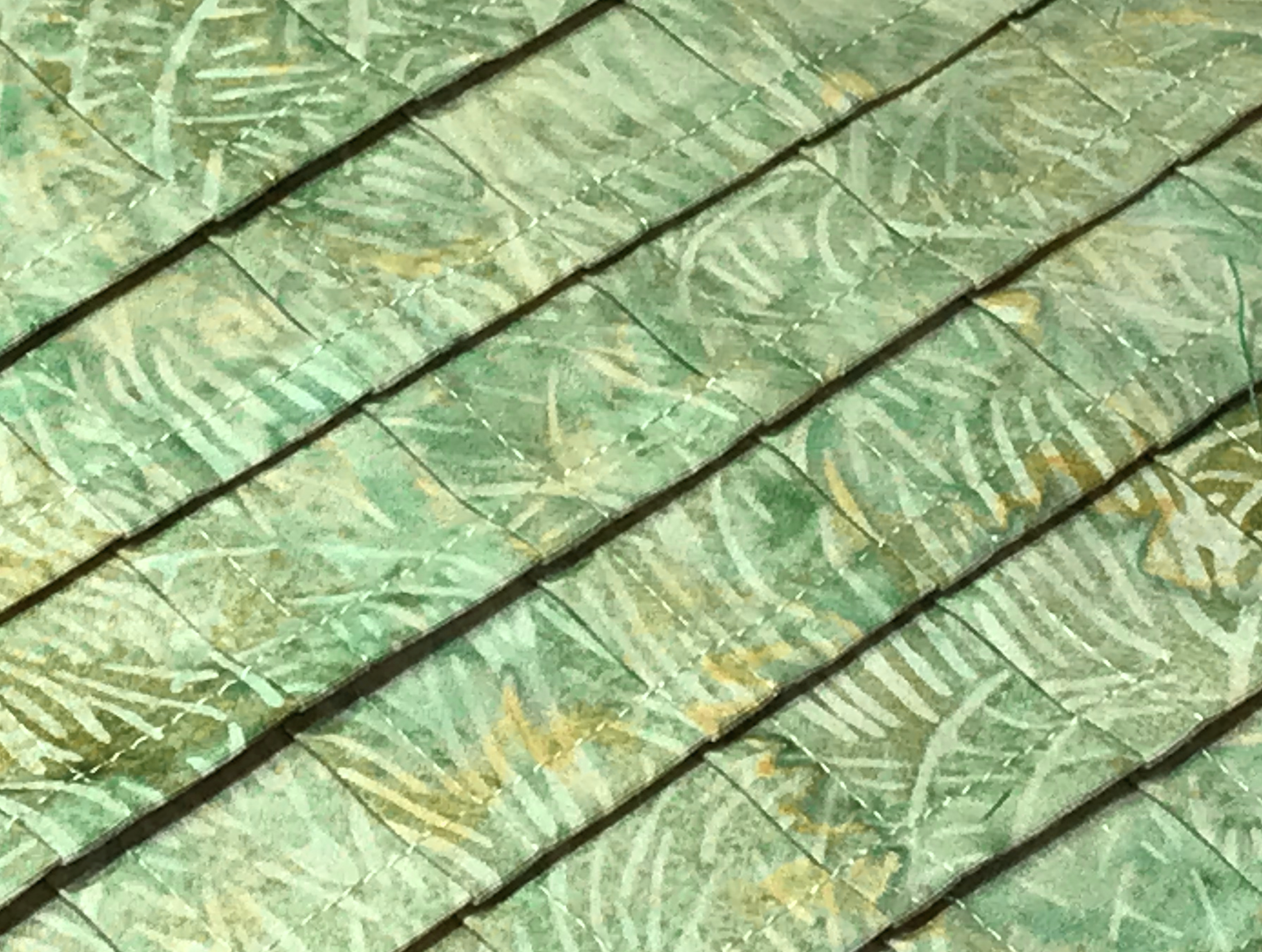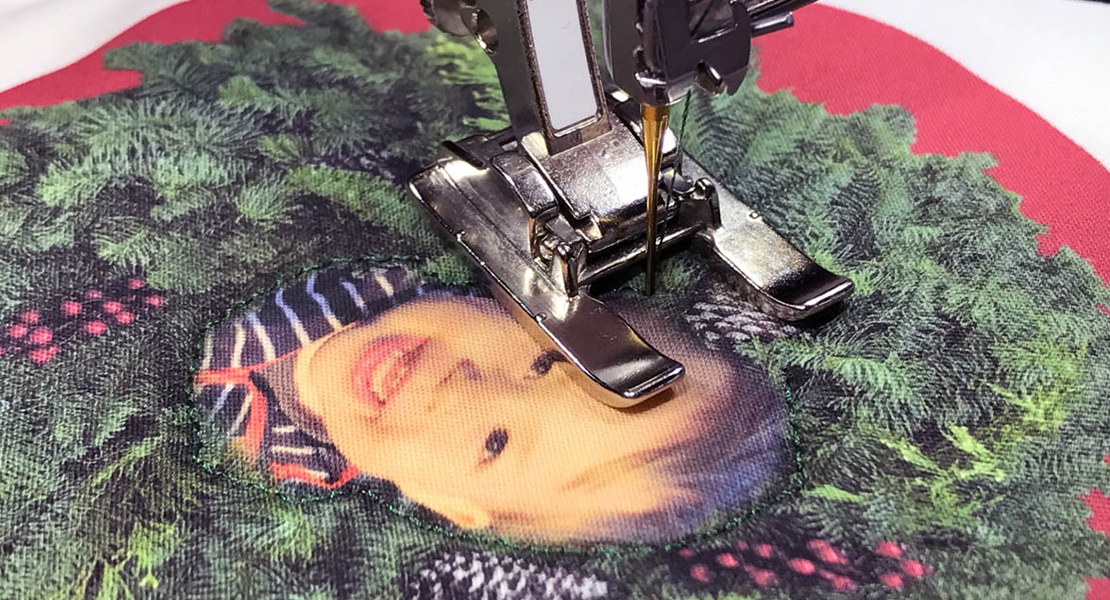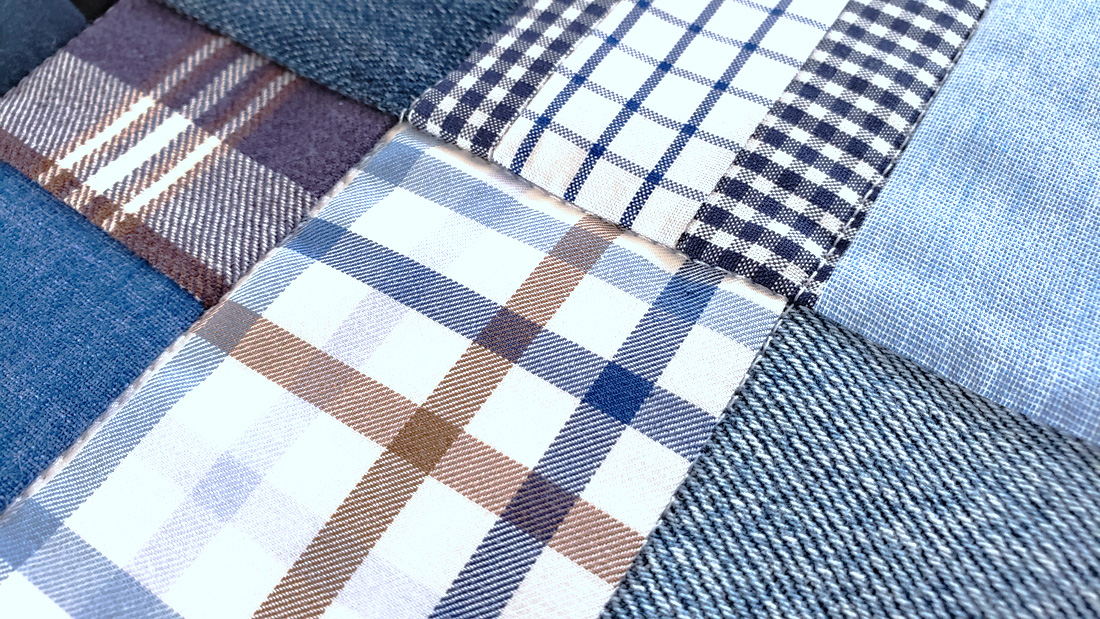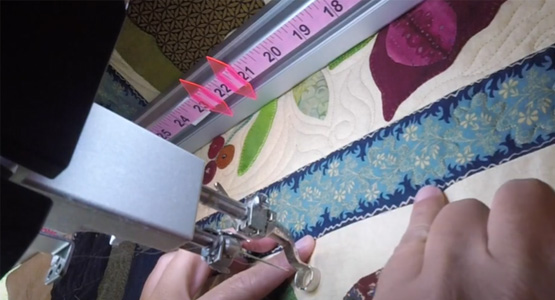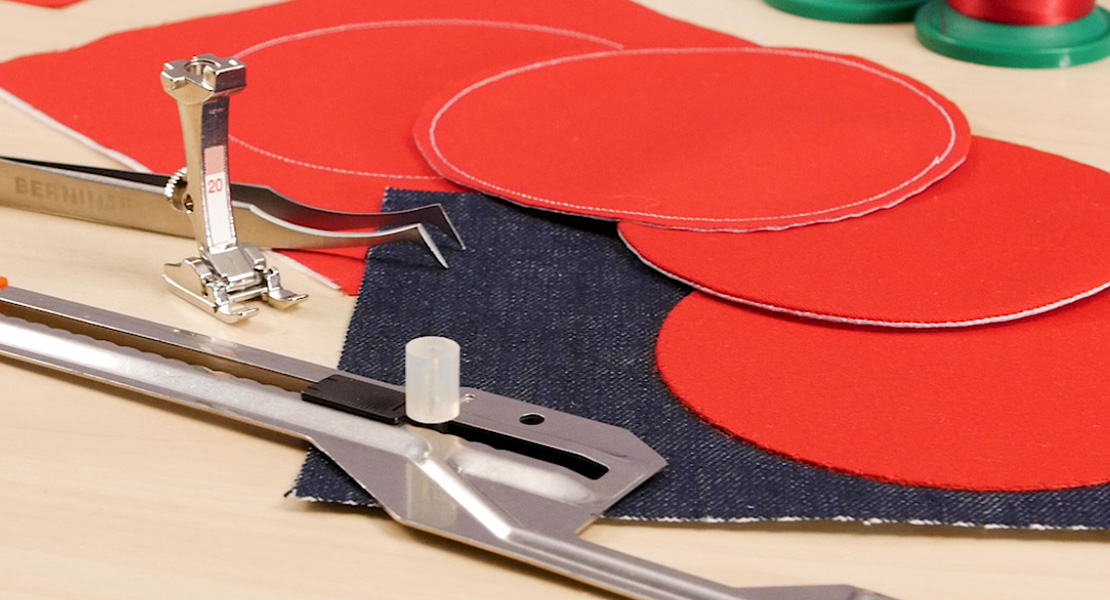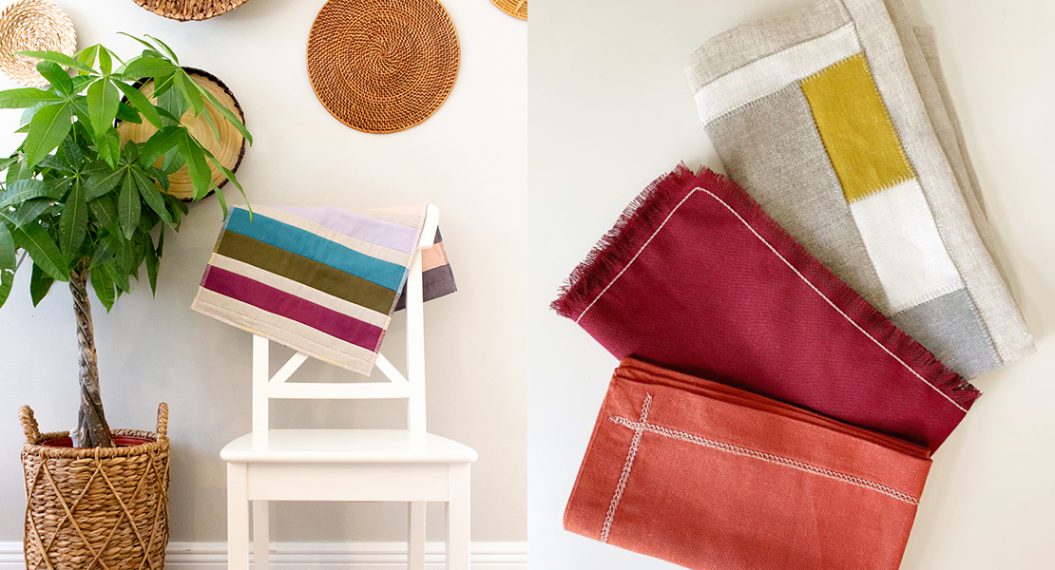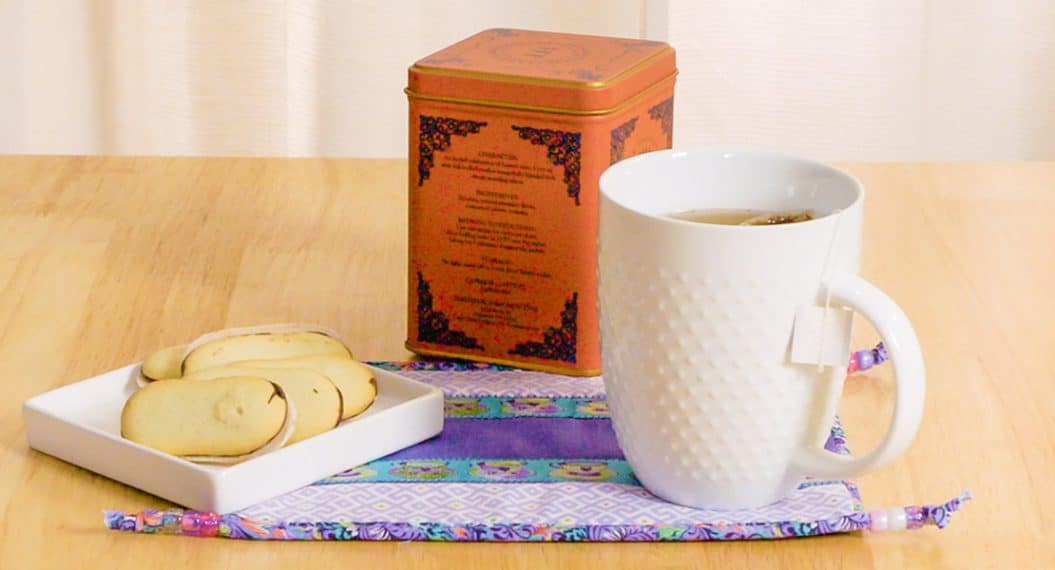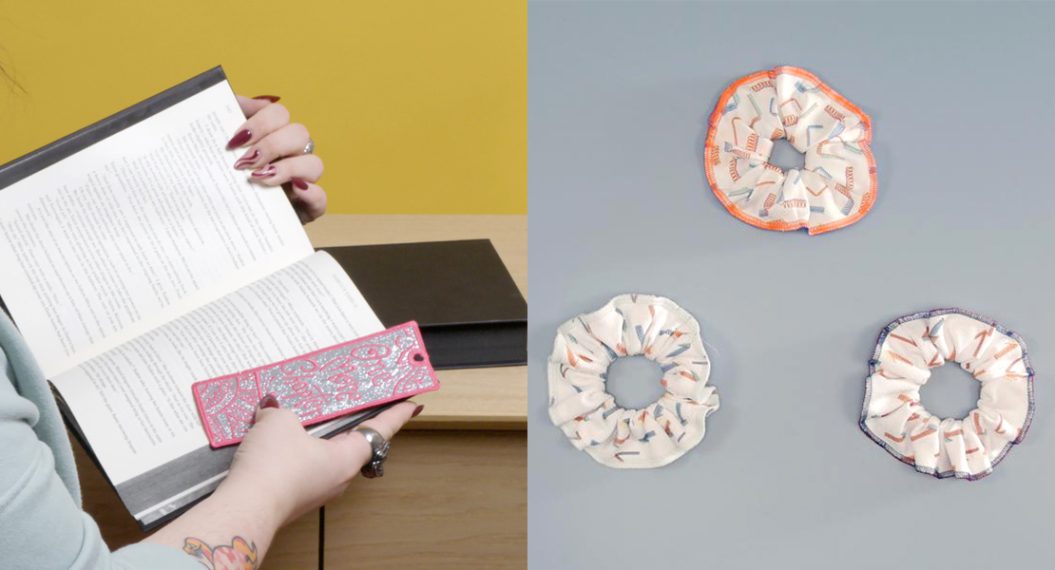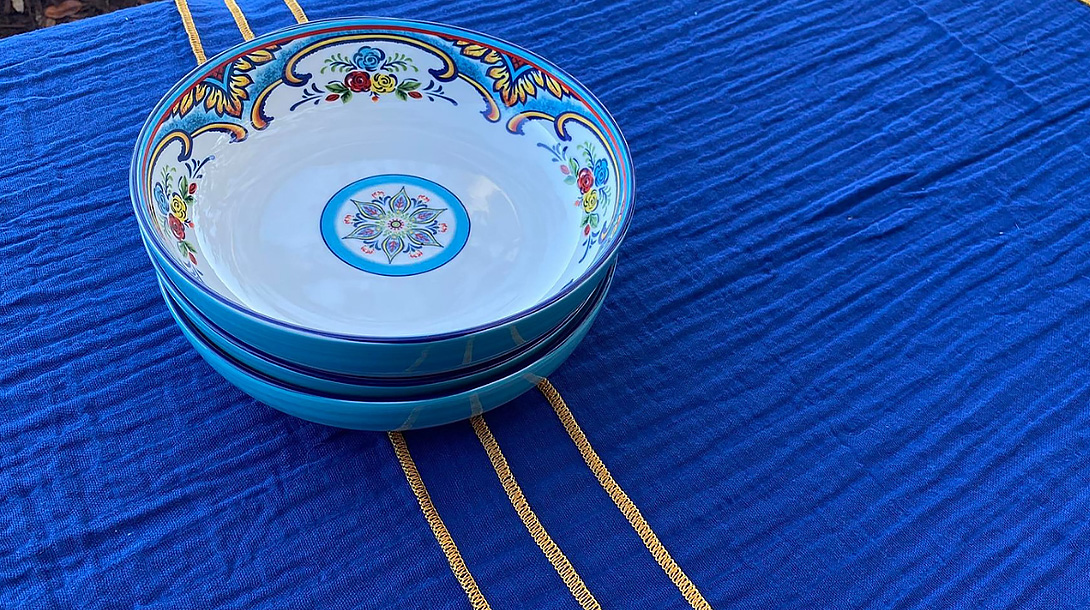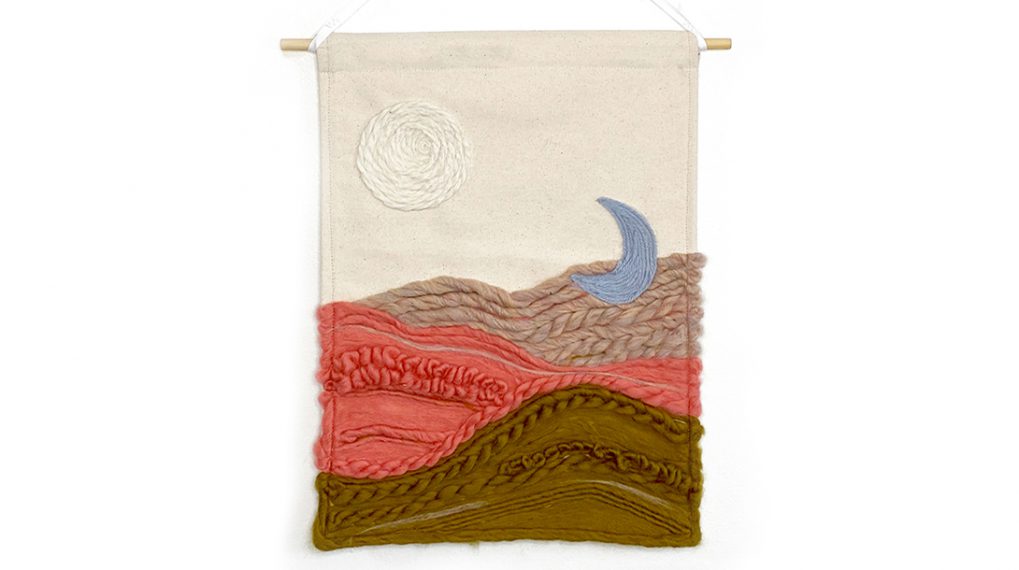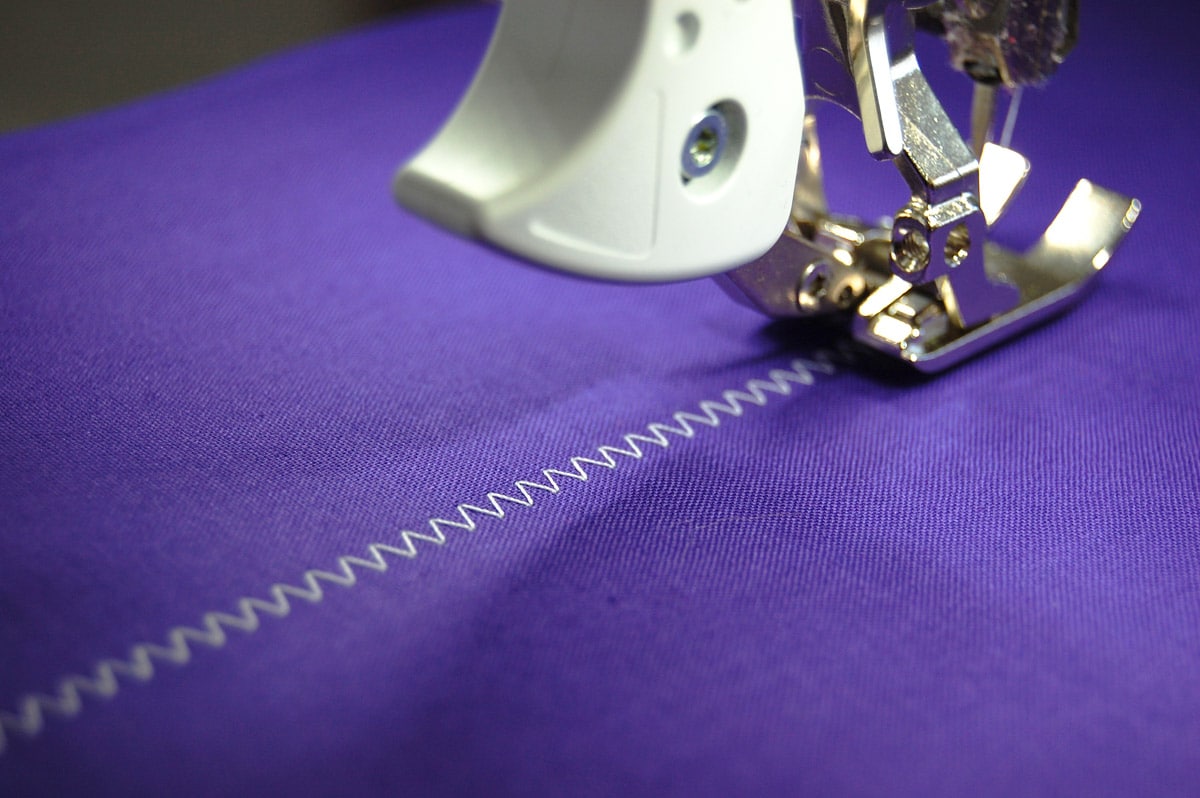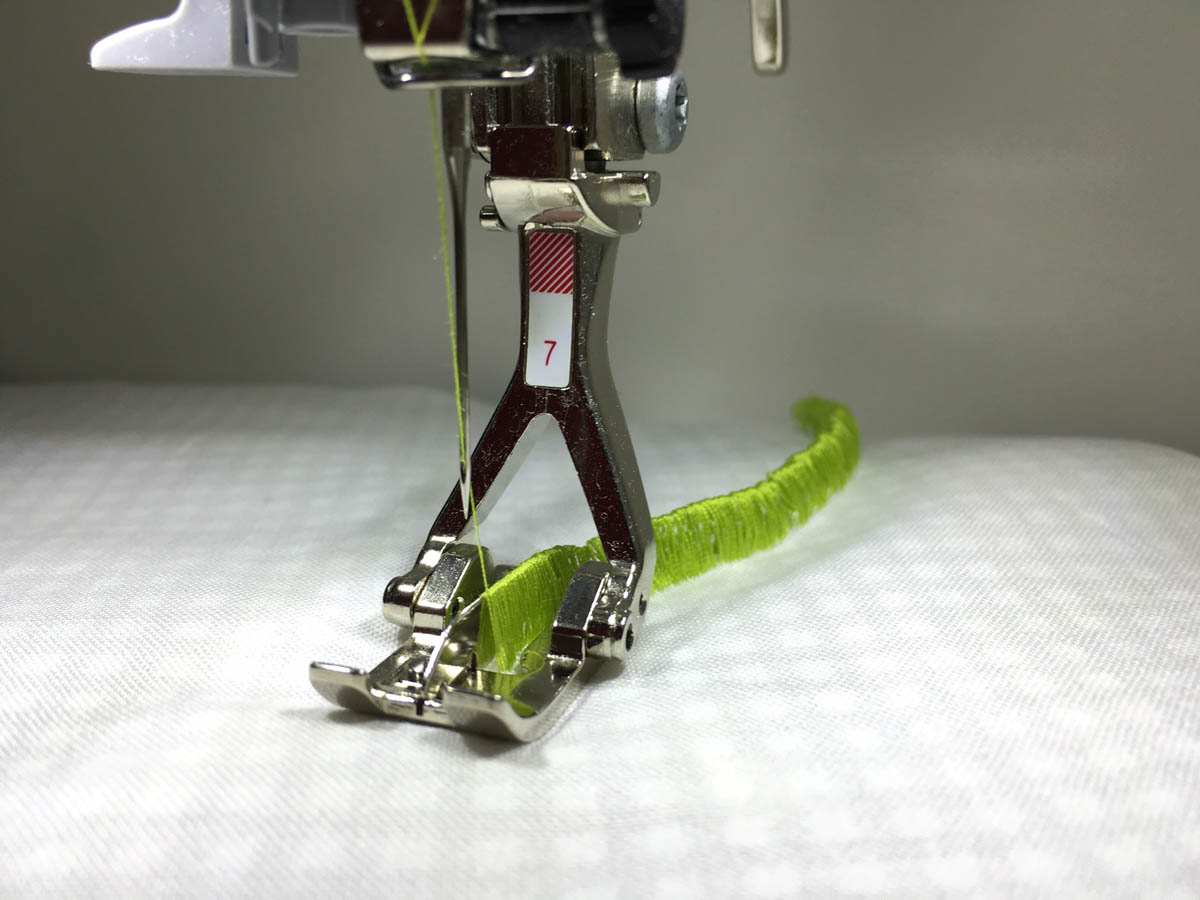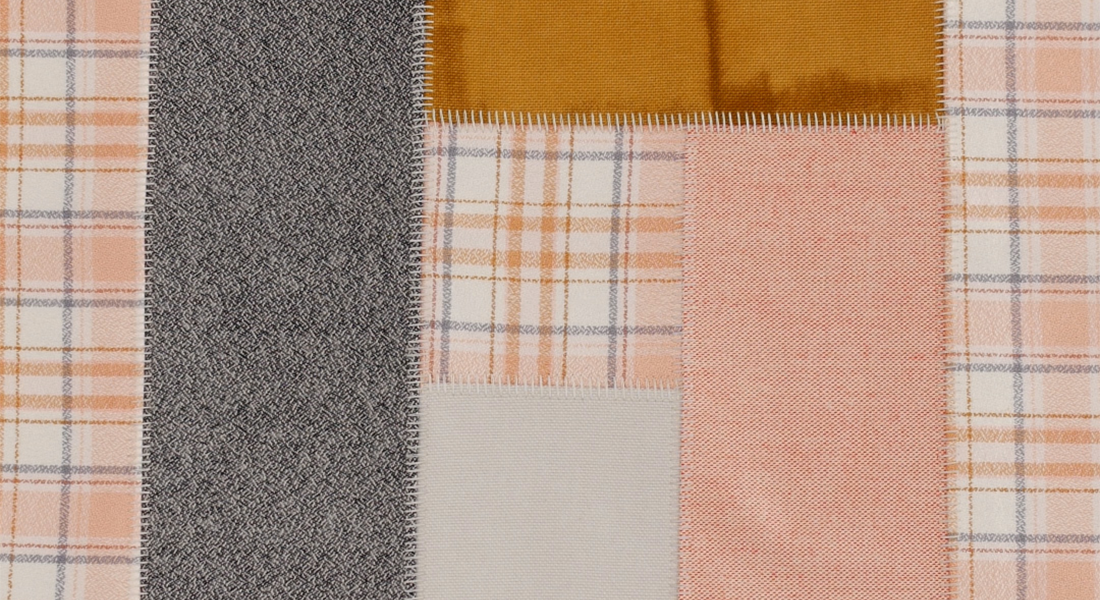Patchwork Made Easy with the Flatlock Stitch
One of my favorite things about the BERNINA L 890 is that it helps transform even the simplest scraps into something exciting. Lately, I’ve been flatlocking everything (seriously, if you follow my upcycling adventures at @sewingthroughfog, you will know the flatlock has taken over my feed). Lightweight Liberty Tana Lawn, upcycled denim, thrifted T-shirts… if it’s fabric, I’ve probably tried to patchwork it together with a flatlock stitch.
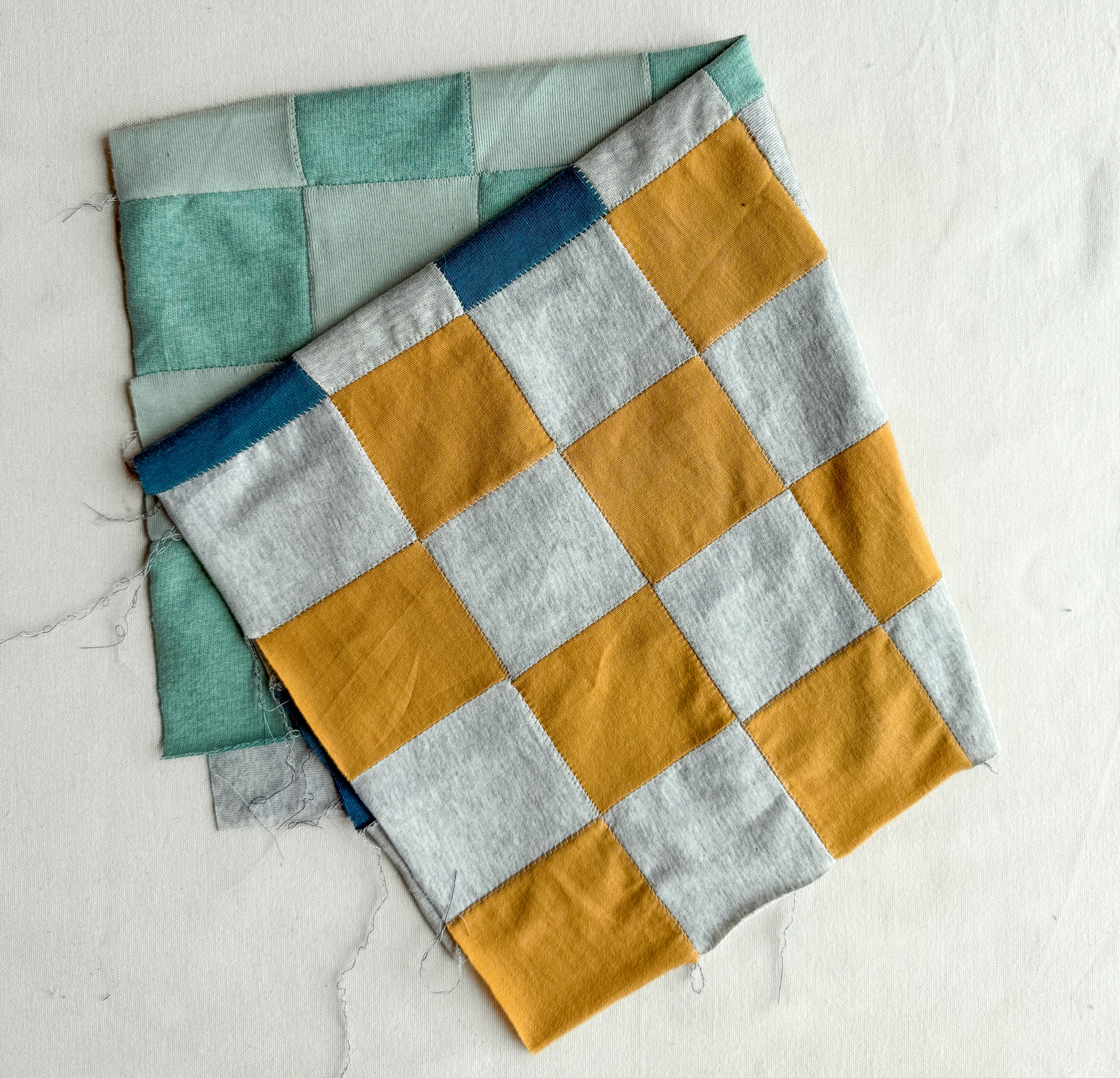
The flatlock is one of those stitches that feels both practical and decorative. You get the security of a serger stitch, but without the seam sticking out. Instead, you pull the stitch open, and it creates a flat seam with a ladder running between your fabric pieces. It’s sturdy, it’s flat, and it looks intentional. Depending on your thread color, you can make it bold or make it disappear.
In This Post…
I’m going to show you some fun examples using this stitch with different types of fabrics. Plus, I’ll share a few tips I’ve learned along the way to keep your flatlock patchwork looking its best.
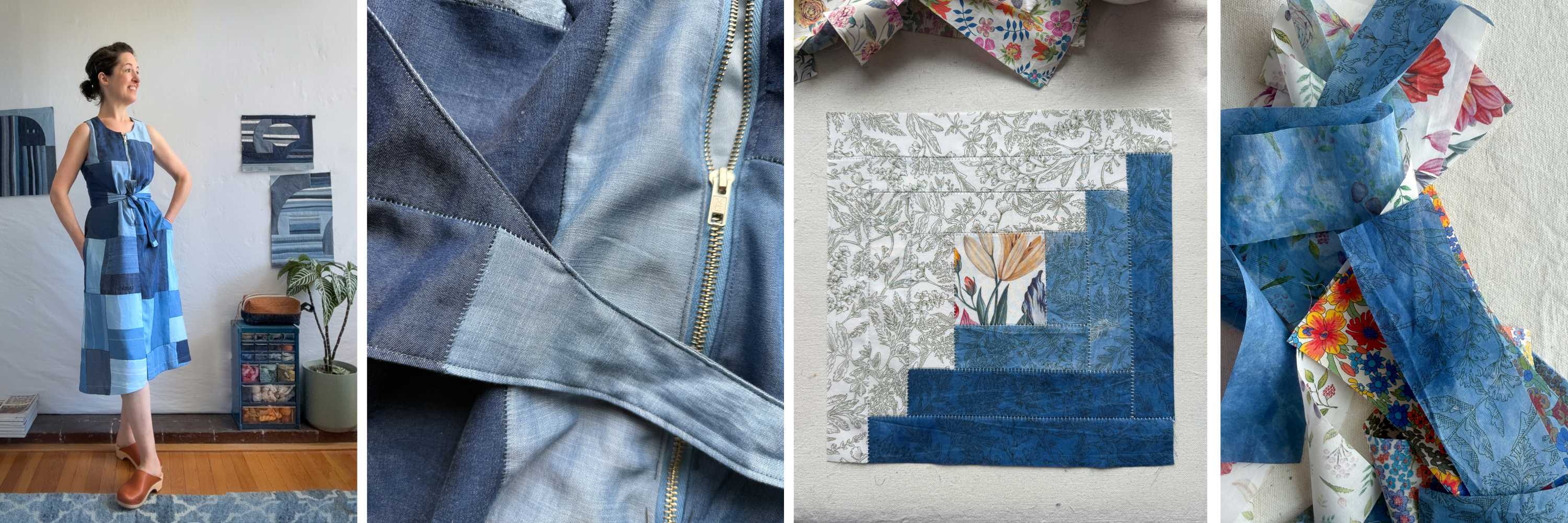
Why Flatlock?
Here’s what makes the flatlock stitch so perfect for patchwork:
- Clean finish: Covers up raw edges, so no fraying.
- Flat construction: Great for wearable pieces, pillows, and anything where bulk matters.
- Visible detail: The stitching becomes a design feature. You can lean into that with bold thread or keep it subtle.
- Conquers stretch: Because an overlocker works great with stretch fabrics, you can truly turn any material (even a t-shirt) into a patchwork.
And all these things make it so versatile! Once your patchwork is built, you can use it for just about anything: turn it into a pillow, add it to the back of a jacket, or use it in your favorite bag pattern. It’s scrap-busting, personality-packed sewing — and it’s so fun.
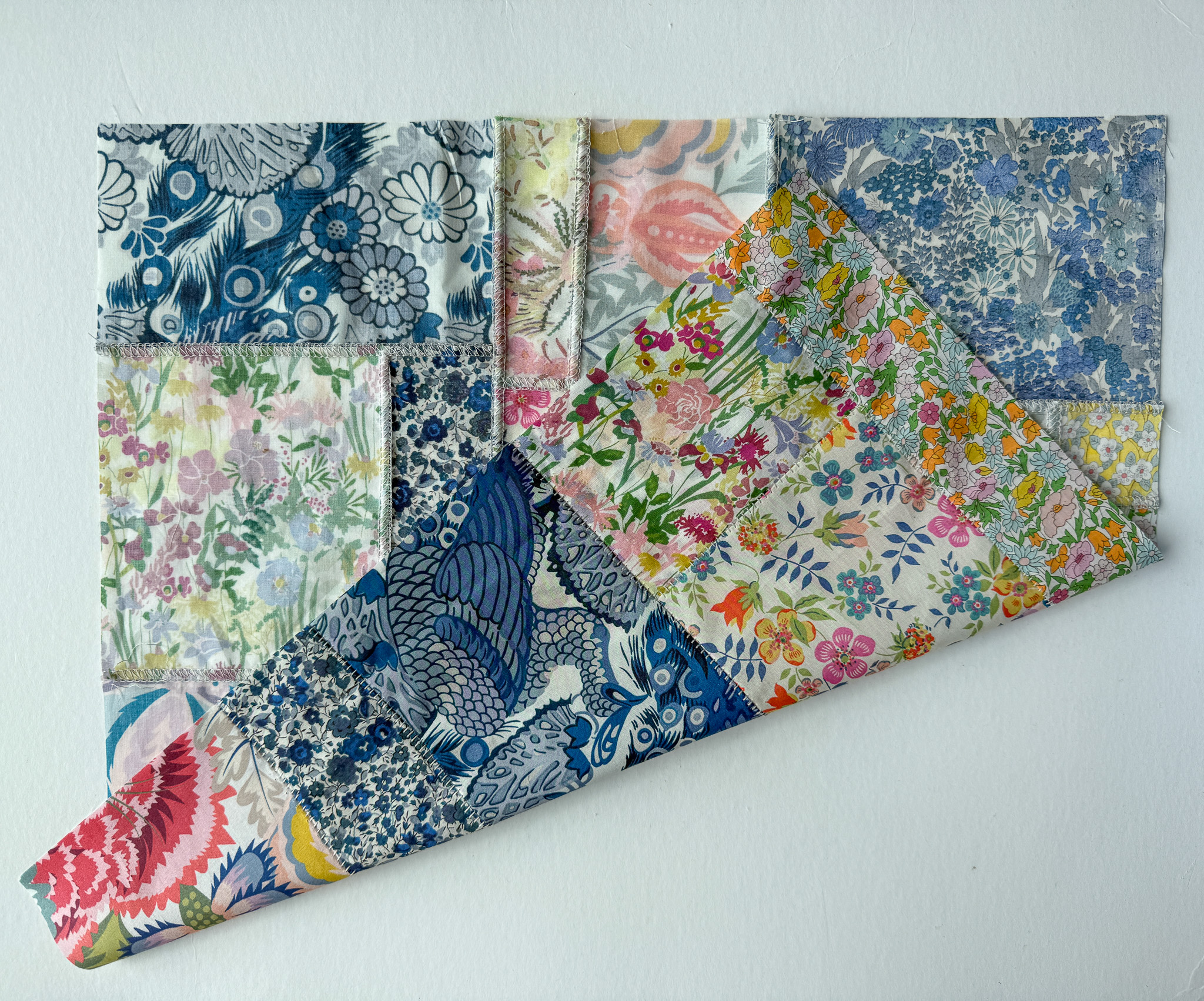
Tools & Tips for Getting Started
Tools
- BERNINA L 890
- Overlock thread (I used Mettler’s Seracor thread)
- Your imagination!
Tips
- Choose your width.
- Use a narrow flatlock for delicate or tight-weave fabrics where you want less thread showing.
- Use a wide flatlock for looser weaves or heavier materials that need more hold.
- Test! Test! Test!
- Every new fabric needs a test run. Seriously, don’t skip this part! You need to test how the fabric responds to the stitch, the width you chose, and troubleshoot any tension, feed or foot pressure issues. Thankfully, the L 890 makes this easy with the Stitch Optimizer function.
- Stick to squares or rectangles for your patchwork.
- We all know that it can be tricky to start or end a seam on a pointy corner. There are ways to get around this on your sewing machine: using a leader or ender scrap, using your walking foot etc… And while the L 890 has amazing controls for the foot pressure and feed dogs, I don’t recommend starting your flatlock journey with triangles. How do I know this? Experience!
Example #1: Liberty Tana Lawn Patchwork
I’ve been collecting Liberty Tana Lawn scraps for years and was so excited to try them in a lightweight, flatlock patchwork project. The goal was to keep it square-ish — no fancy angles or curves — and to treat the whole thing like improv piecing, but with right-angles only.
Lightweight fabrics that are tightly woven can usually handle a narrow flatlock, which shows less thread and feels more delicate. I used stitch #6 the 3-Thread Flatlock Narrow (RN) and light grey Seracor thread to create a subtle flatlock for the Liberty scraps.
Example #2: Denim Patchwork
This technique also works beautifully with upcycled denim. Whether you want to turn lightweight scraps into a dress or heavier-weight scraps into large or mini textiles that can get incorporated into any future projects.
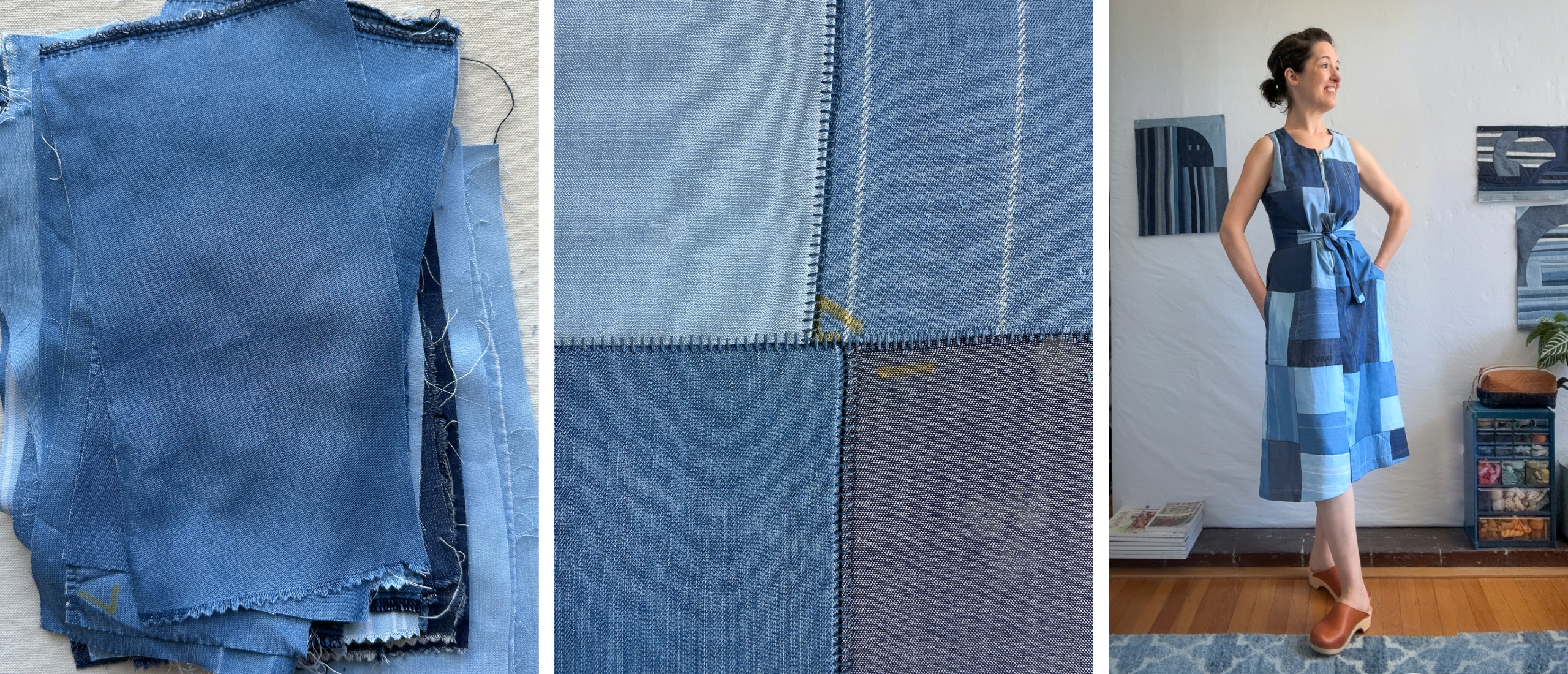 The denim I used for this dress was actually super lightweight and had a really loose weave, and it took me a bit of experimenting to find the right combination. I ended up playing with the stitch length and cutting width to get the result I wanted. In the Tips for Execution section below, you can see what happened when the cutting width was too narrow.
The denim I used for this dress was actually super lightweight and had a really loose weave, and it took me a bit of experimenting to find the right combination. I ended up playing with the stitch length and cutting width to get the result I wanted. In the Tips for Execution section below, you can see what happened when the cutting width was too narrow.
With these heavier-weight denim scraps, I made a large patchwork that I’m holding for the perfect project (you might just see that soon here on the blog!) and I used strip piecing to create some mini patchworks I might turn into a small bag.
Example #3: T-shirts & Jersey Knit
Why would you want to make patchwork out of knits? How about a T-shirt quilt without the fusible interfacing!
Knit fabrics, like old tees or sweatshirts, are also great candidates for flatlock since the overlocker is perfect for knits. Recently, I found a bunch of T-shirt fabric samples at the creative reuse center I volunteer at, and it felt like the perfect opportunity to make a modern T-shirt quilt! I used a strip piecing technique (just like I would on my BERNINA 770 QE), but this time I used the flatlock stitch on my L 890.
There was a bit of a learning curve on this one and a lot of trial and error to get the tension right, but it was definitely worth it. And yes, if you look closely, you will see a lot of the corners don’t match perfectly. But who cares about perfect corners when you are making something so soft and cozy?!
That being said, below are some more tips to get your patchwork looking its best.
Tips for Execution
- Always trim just a little: Make sure your blades are trimming the edge — even if it’s just barely. If the fabric doesn’t get trimmed, the flatlock might not fully catch. I usually line up the edge of the fabric with the edge of the presser foot.
- Who’s on top matters: The fabric that’s on top when you flatlock will stay flat; the one underneath curves when you pull it open. I try to put the heavier or seamier piece on top to keep things smooth.
- Secure your ends: Flatlock stitches can unravel if you trim them and don’t secure the seam ends. I only trim if absolutely necessary, and I handle those pieces carefully until they’re stitched into the next seam.
Trial & Error
It doesn’t matter how long you have been sewing; when you try new things, something is bound to go wrong. But that’s part of the process, and I believe that’s when you learn the most. When I first tried the flatlock stitch with my lightweight, loosely woven denim scraps, they kept splitting when I opened them. I adjusted the cutting width to be wider, and the problem was fixed!
My first attempt at a T-shirt quilt used HST’s (half square triangles), and I realized really quickly that flatlocking two triangles together was possible but not something I wanted to advise anyone else to try when they were just starting out. The picture doesn’t show the wonkiest ones because they were quickly taken apart. But both of these errors led to things that worked, and I don’t regret them.
Once You Have Your Patchwork…
Finish the outer edges with a basic overlock stitch to keep things tidy and prevent fraying, and then do whatever you want with it!
Use Your Patchwork
- Sew it into a zipper pouch or a tote bag
- Add it to the back of a jacket
- Frame it and hang it as art
- Turn it into a decorative pillow
- Use it in your favorite garment pattern (intermediate to advanced)
Final Thoughts
Once you start stitching and pulling open those flatlocks, the patchwork just comes to life. It’s kind of addictive. So, if you’ve been wanting to use up your scrap bin (or let’s be real, bins), this is such a fun way to experiment and create something one-of-a-kind. The L 890 handles it all, and once you get into the rhythm of it, you’ll be amazed at how quickly your fabric puzzle pieces start coming together.
Next up, I’ll show you how I turn my denim patchwork into a simple home project — stay tuned!
